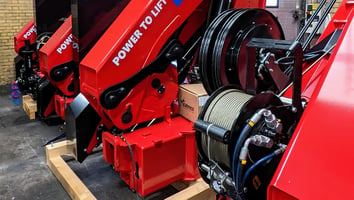As whispers of sustainability turn into compelling conversations, the 'as-a-service' model emerges...
Understanding CAPEX vs. OPEX: A New Sustainability Lens
Is CAPEX the Hidden Enemy of Sustainable Manufacturing?
Manufacturing isn't just about churning out products anymore—it's about embedding sustainability into the fabric of operations. While you might be tempted to think large upfront investments (CAPEX) champion sustainability, it's the nimble, flexible OPEX that might just be the dark horse galloping towards a greener future. Let’s dissect why.
Delving into CAPEX, it sounds quite heroic. Companies make heavy, long-term investments, hoping for equally substantial returns. These significant outlays usually cater to infrastructure, machinery, and tech—the backbone of any manufacturing unit. But here's a little quirk: these assets, while robust, can anchor companies down, making it tough to adapt quickly to new, sustainable trends. Take the case of a manufacturing giant who invested millions in machinery. Five years later, more energy-efficient models hit the market. But trapped in a CAPEX quagmire, the switch becomes a costly, nearly impossible endeavor. Thus, what was once a boon morphs into an anchor, weighing down sustainability prospects.
Enter OPEX. Operating expenditure, or OPEX, is like the nimble fox—quick, adaptable, and with a sharp eye on the present. Instead of locking funds into static assets, OPEX focuses on the current: daily operations, leasing, and short-term costs. Consider a startup manufacturer that leases equipment. When a greener, more efficient model emerges, they can quickly upgrade without a blink. OPEX inherently champions flexibility—arguably the most crucial component for sustainability. The ability to adapt swiftly to sustainable tech, practices, or materials gives OPEX-driven manufacturers an edge. It's sustainability on-the-go.
Now, place these in the grand arena of manufacturing, and the scales tip unexpectedly. Traditional logic hails CAPEX as the knight in shining armor. Yet, when draped in a sustainability cloak, OPEX steals the limelight. Let's envision a renowned beverage company. They could invest heavily in proprietary bottling machinery (CAPEX) and be bound to it for years. But what happens when biodegradable packaging technology surfaces two years later? On the flip side, imagine if they rented equipment and focused their resources on daily operations and research (OPEX). The pivot to eco-friendly packaging would be swift and seamless.
This isn't a call to demonize CAPEX or exalt OPEX, but rather an invitation to rethink their roles in sustainable manufacturing. With the global clarion call for sustainability growing louder, the manufacturing sector must dance to its tunes—and perhaps, it's the agile footwork of OPEX that resonates best with this rhythm.
Recall our opening conundrum: Is CAPEX truly the hidden adversary of sustainable manufacturing? While it's tempting to draw a hasty battle line, it's more about perspective. Both CAPEX and OPEX have roles, but as the winds of change blow, it's essential to question, adapt, and re-strategize. In the ever-evolving quest for sustainability, it might just be time to give OPEX its moment in the sun.




